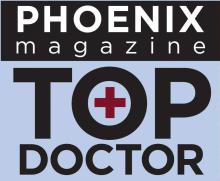Co-morbidities and even sleep disorder co-morbidities are fairly common, especially when it comes to obstructive sleep apnea (OSA) and insomnia. These are two of the most commonly diagnosed sleep disorders at The Insomnia and Sleep Institute of Arizona, and oftentimes they are diagnosed together. However, both of these disorders increase risk of death and various other issues. This dangerous circumstance was highlighted in a Flinders University analysis that underscores the importance of risk factors, self-reporting symptom, and potential tools that might help get a quicker diagnosis—particularly for those who do not have easy access to sleep clinics and testing labs.
According to the lead author, “Insomnia and obstructive sleep apnea are the two most common sleep disorders, each occurring in 10 – 30 percent of the general population.” When the two occur together, it’s called co-morbid insomnia and sleep apnea, or COMISA. “Almost 50 percent of people with OSA have clinically significant insomnia, while 30 – 40 percent of people with chronic insomnia have OSA,” reports the researchers. If you have “just” OSA or sleep apnea, you’re going to have a lower quality of life and use more healthcare services. However, if you have COMISA, you have even worse sleep and daytime function, more pronounced mental health issues and lower productivity, and an even higher chance of cardiovascular disease.
COMISA Living
Previously, studies typically used data derived from overnight sleep labs (polysomnography) to diagnose OSA. However, not everyone has easy access to such locations, either geographically or because they cannot get a referral from their GP. The latter is why The Insomnia and Sleep Institute does not require a referral for a consultation with a sleep expert who can diagnose disorders like COMISA. This survey aimed to find out better ways patients can self-report on all risks that might increase mortality. The full study is published in Sleep Epidemiology and considered data from 7,000 people. Most, 74 percent, reported no conditions while 20 percent had OSA, 3 percent had insomnia, and 3.3 percent self-reported COMISA. Analysis revealed that COMISA symptoms were linked to a 56 percent increase in risk of death—from any cause—compared to those without COMISA. The study included an 11 year follow-up and accounted for various behavioral and sociodemographic factors as well as medications and chronic conditions. According to the researchers, “While our study further highlights the risk of [COMISA], it directly addressed the study’s aim, finding that elf-reported insomnia symptoms combined with the STOP-Bang questionnaire [used to assess OSA] can be used to identify people with probable COMISA at risk of adverse health outcomes.”
Getting the Right Diagnosis
Regardless of your potential disease or disorder, getting the right diagnosis quickly and easily is paramount. Many patients at our clinic are from outside of the region or out of state. We are the Face of Sleep Medicine because not only do we make it easy to access care and experts, but we are home to some of the leading experts in various specialties of sleep medicine. Still, it is important to have options to help with self-reports, as such tools may be a catalyst for patients to seek out consultations and diagnoses.
The researchers stress that these findings are “significant given the high costs, limited availability and long wait times to access polysomnography,” particularly for those in rural regions. An overnight sleep study is often required to diagnose many disorders, including OSA, and we aim to make it relatively fast and easy to undertake this task. The sooner you get the diagnosis and testing that you need, the sooner treatment or management can commence.
Treatment Options for COMISA
Insomnia and OSA are treated differently. Many patients enjoy success with cognitive behavior therapy for insomnia (CBT-I), which is available at our clinic. Lifestyle changes and, sometimes, medications can also be helpful. The gold standard in managing OSA is with CPAP therapy. Those who are overweight may also benefit from weight loss since extra pounds can make it difficult to breathe at night. The rare few who do not have success with CPAP may be good candidates for alternative therapies like implants. If you or your child presents with any potential sleep disorder symptoms, schedule your consult with a sleep expert today and get started on the management journey. Call The Insomnia and Sleep Institute during hours of operation or fill out the online contact form now for the fastest response.





